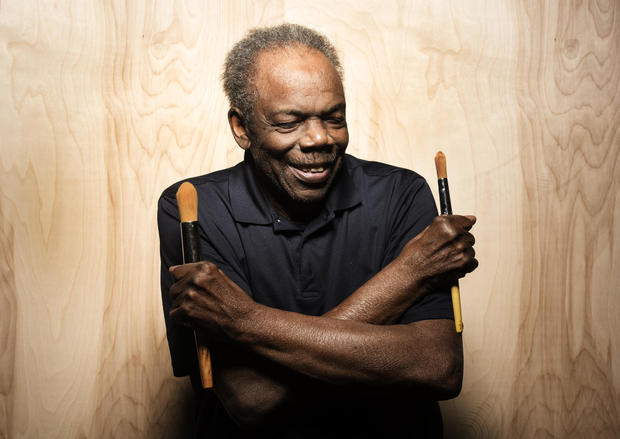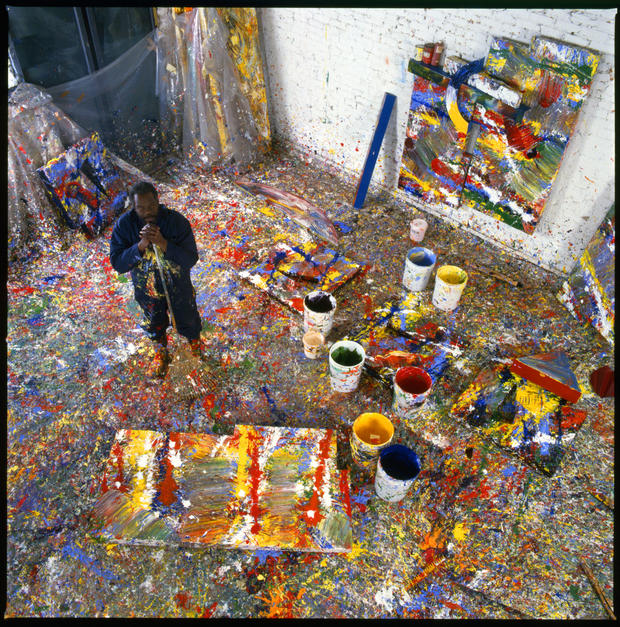Sam Gilliam, the groundbreaking abstract artist known for his work with draped canvas, died Saturday at 88, the galleries that represented him confirmed in a joint statement on Monday.
"Sam Gilliam was one of the giants of Modernism. He was a great friend and great artist who was able to convey the shared torments and triumphs of life through the universal language of abstraction," Arne Glimcher, the owner of one of the galleries that represented Gilliam, said in the statement.
Gilliam was born in 1933, in Tupelo, Mississippi, the statement said. He made his debut in the art world in Washington, D.C., as a leader in the Washington Color School. In the 1960s, he began creating his signature work: stained, draped canvases that were suspended from ceilings and walls.
"By suspending his stained canvases from ceilings and walls, Gilliam transformed the medium of painting and its relationship to the spatial and architectural context in which it is viewed," the statement said, saying his work "changed the history of art."
The statement also highlighted how Gilliam's work was influenced by the social revolution of the time. One of Gilliam's representatives, David Kordansky, said in a statement that "It is no accident that Sam's breakthroughs came during the height of the civil rights movement. He demanded that art, however abstract or resistant to discursive language, serve as nothing less than an artist's primary means of engaging with the world."
"The year 1968 was one of revelation and determination," Gilliam once said, according to the joint statement. "Something was in the air, and it was in that spirit that I did the Drape paintings."
In 1972, he was the first Black artist to represent the U.S. at the Venice Biennale, an international cultural exhibition, according to The New York Times.
He continued to innovate in the decades that followed, the statement said, incorporating new forms, textures and materials — like thick acrylic paint in geometric, abstract shapes and large paintings on paper and wood. His work can be found in major museum collections around the world, including the Metropolitan Museum of Art in New York, the Tate Modern in London, and the Musée d'Art Moderne de la Ville de Paris in France.
"I am deeply honored and blessed to have known Sam Gilliam through the last decade of his journey. To serve his vision has been a life-defining privilege," Kordansky said in the joint statement. "It has been about more than work or even passion-it is a form of devotion to principles that represent what is good, abiding, and true. Sam changed the course of my life, like he inspired the lives of many others, as a generous teacher, mischievous friend, and sage mentor. Above all, Sam embodied a vital spirit of freedom achieved with fearlessness, ferocity, sensitivity, and poetry."
Kordansky said Gilliam is survived by his wife, Annie; and three children, Stephanie, Melissa, and Leah Franklin.




Post a Comment